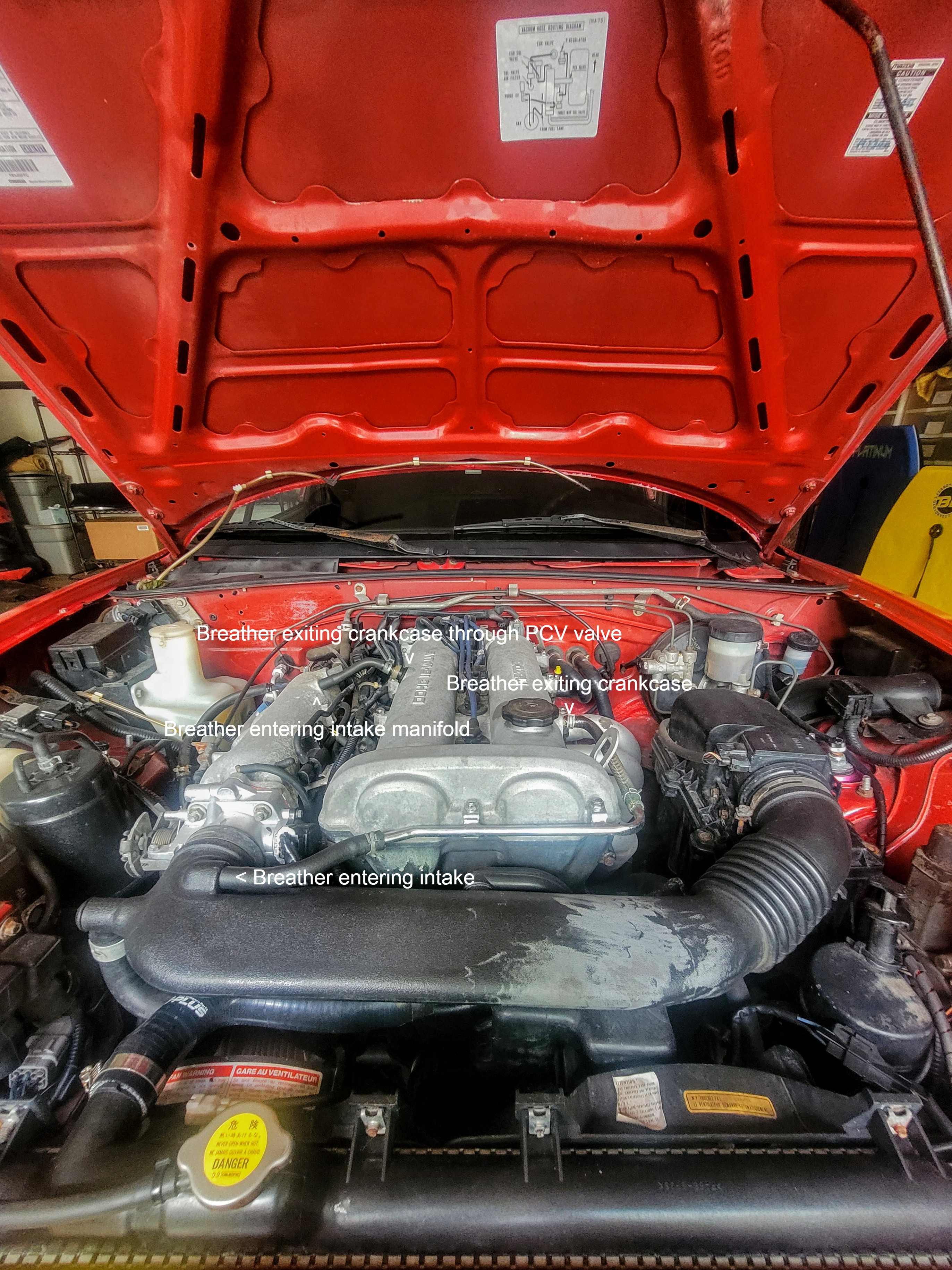|
Oil Catch Tank
An oil catch tank or oil catch can is a device that is fitted into the cam/crankcase ventilation system on a car. Installing an oil catch tank (can) aims to reduce the amount of oil vapors re-circulated into the intake of the engine. Positive crankcase ventilation During normal operation of a car engine, some vapors from the cylinder pass by the piston rings and down into the crankcase. Without ventilation this can pressurize the crankcase and cause issues such as lack of piston ring sealing and damaged oil seals. To avoid this, manufacturers created a crankcase ventilation system. Originally this was often a very basic setup where a filter was placed on the top of the cam case and the pressure and vapors were vented to atmosphere. This was deemed unacceptable as it allowed fumes and oil mist to be vented out into the atmosphere which caused pollution. It could also cause issues for the occupants of the car as it could be drawn into the inside of the car, which was often unpleas ... [...More Info...] [...Related Items...] OR: [Wikipedia] [Google] [Baidu] |
Crankcase Ventilation System
A crankcase ventilation system removes unwanted gases from the crankcase of an internal combustion engine. The system usually consists of a tube, a one-way valve and a vacuum source (such as the inlet manifold). The unwanted gases, called "blow-by", are gases from the combustion chamber which have leaked past the piston rings. Early engines released these gases to the atmosphere simply by them leaking through the crankcase seals. The first specific crankcase ventilation system was the ''road draught tube'', which used a partial vacuum to draw the gases through a tube and release them to the atmosphere. Positive crankcase ventilation (PCV) systems— first used in the Second World War and present on most modern engines— send the crankcase gases back to the combustion chamber, in order to reduce air pollution. Two-stroke engines with a crankcase compression design do not need a crankcase ventilation system, because normal operation of the engine involves sending the crankcase g ... [...More Info...] [...Related Items...] OR: [Wikipedia] [Google] [Baidu] |
Engine Oil
Motor oil, engine oil, or engine lubricant is any one of various substances used for the lubrication of internal combustion engines. They typically consist of base oils enhanced with various additives, particularly antiwear additives, detergents, dispersants, and, for multi-grade oils, viscosity index improvers. The main function of motor oil is to reduce friction and wear on moving parts and to clean the engine from sludge (one of the functions of dispersants) and varnish (detergents). It also neutralizes acids that originate from fuel and from oxidation of the lubricant (detergents), improves sealing of piston rings, and cools the engine by carrying heat away from moving parts. In addition to the aforementioned basic constituents, almost all lubricating oils contain corrosion and oxidation inhibitors. Motor oil may be composed of only a lubricant base stock in the case of non- detergent oil, or a lubricant base stock plus additives to improve the oil's detergency, extreme ... [...More Info...] [...Related Items...] OR: [Wikipedia] [Google] [Baidu] |
Vapor
In physics, a vapor (American English) or vapour (British English and Canadian English; American and British English spelling differences#-our, -or, see spelling differences) is a substance in the gas phase at a temperature lower than its critical temperature,R. H. Petrucci, W. S. Harwood, and F. G. Herring, ''General Chemistry'', Prentice-Hall, 8th ed. 2002, p. 483–86. which means that the vapor can be condensation, condensed to a liquid by increasing the pressure on it without reducing the temperature. A vapor is different from an aerosol. An aerosol is a suspension of tiny particles of liquid, solid, or both within a gas. For example, water has a critical temperature of , which is the highest temperature at which liquid water can exist. In the Earth's atmosphere, atmosphere at ordinary temperatures gaseous water (known as water vapor) will condense into a liquid if its partial pressure is increased sufficiently. A vapor may co-exist with a liquid (or a solid). When this is ... [...More Info...] [...Related Items...] OR: [Wikipedia] [Google] [Baidu] |


